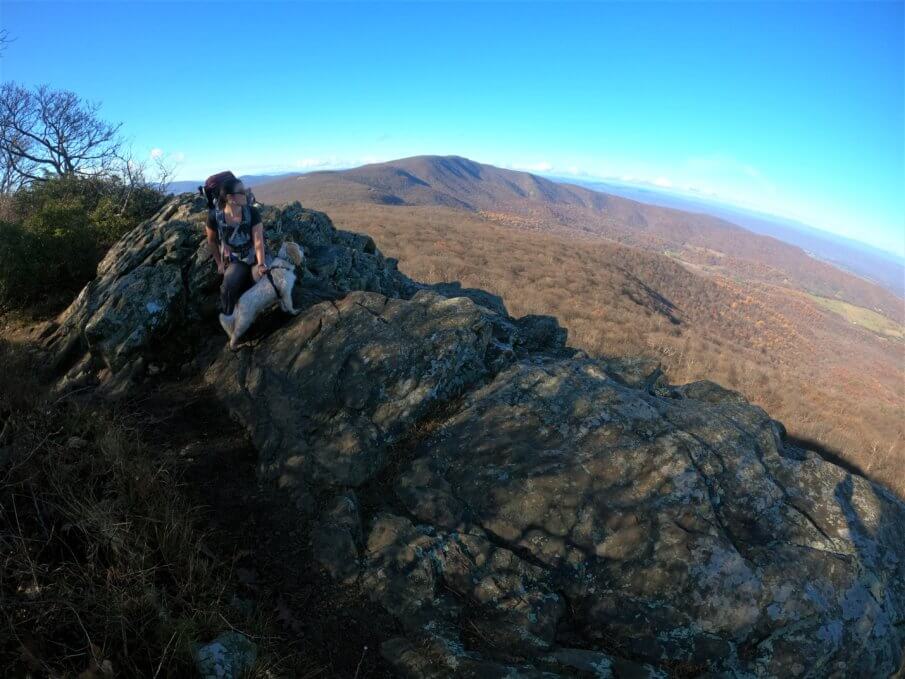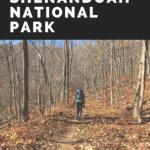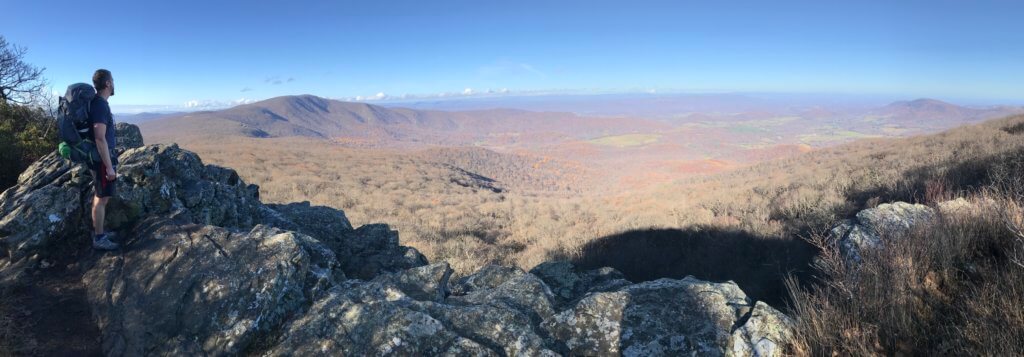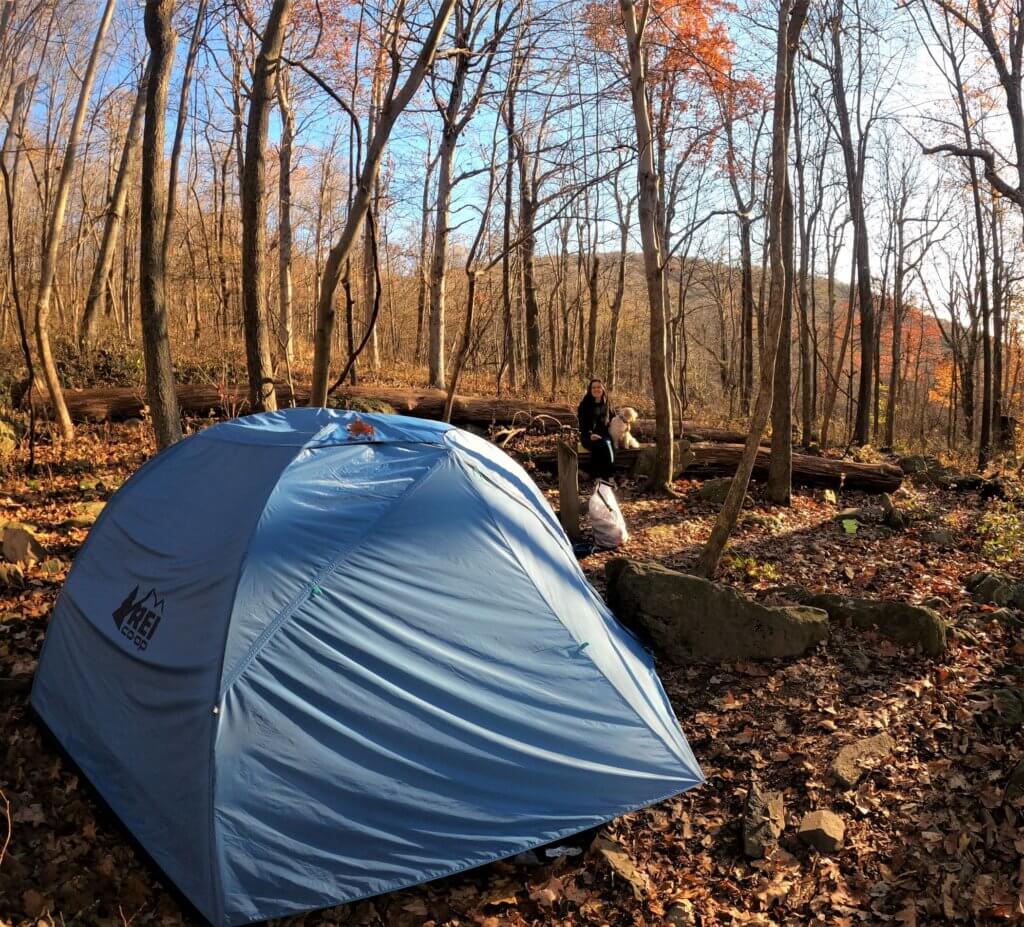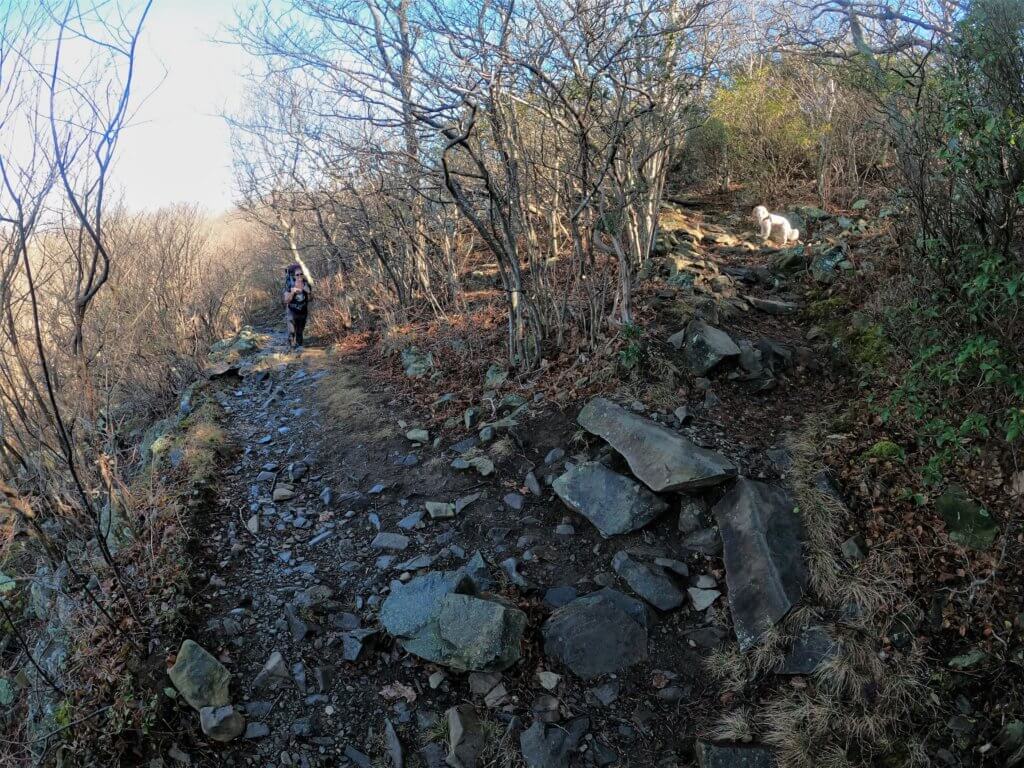*This post contains affiliate links, if you click a link I make a small commission and you help support the blog
Shenandoah National Park is a thin stretch of wilderness hugging the Blue Ridge Mountains of Virginia run by the National Park Service. The main road through the park, Skyline Drive, runs close to the highest points. This means if you are hoping to do some serious climbing, this is not the park for you. It’s more for the relaxed trip. Don’t get me wrong, the wilderness is still very rugged and there is a large population of black bears, but the hiking is not that tough.
However, with over 500 miles of trails to choose from, and 101 miles of the Appalachian trail being part of that, deciding where to go can pose a bit of a challenge.
History of Shenandoah National Park
The park has an interesting blend of history. It’s not about stumbling upon beautiful natural areas that someone felt needed to be preserved.
Initially, this land was used by native tribes for hunting and gathering seeds and berries before being forced out by early European settlers. These settlers built homes, had farms and built orchards, living their lives separate in a way that time seemed to forget for a while anyway.
Then it was decided that the area would make a great National Park. Over time these people were forced out of their homes and their way of life. Once all the land was purchased and donated to the federal government for the creation of a National Park something else happened. The Great Depression.
Roosevelt then created a program enlisting young, able-bodied men to work under the guidance of the US Army in what was called the Civilian Conservation Corps. This gave them a small income but also helped in the building of infrastructure in the park.
This group of men are the reason Skyline Drive exists, there are stone walls at the lookoffs, and there are picnic areas.
It’s not a pretty tale, but it’s the history of the park and means the park is filled with historic sites. It’s filled with loss as well as a drive to conserve lands and nature.
General Information
If you are coming from away, the biggest nearby airport is the Washington Dulles International Airport and a great place to rent a car.
The park is a thin sliver of wilderness centered around Skyline Drive, or the ridge of the Blue Ridge Mountains. This means that no matter where you are in the backcountry, you are never far from the main road. This main road is part of the larger Blue Ridge Parkway, which runs 469-miles and connects Shanandoah National Park to Great Smoky Mountains National Park.
Many of the trails crisscross Skyline Drive in multiple spots but even without hiking this is a very scenic drive. So, if you are looking for absolute solitude, well away from others, this is not the park for you.
There are a multitude of parking lots connecting you to look offs and a variety of hiking trails but do consider the location you want to visit and the time of year, as some lots could become full quickly. Especially since there are 1.5 million park visitors every year.
The best time to visit is spring (March through May) and the fall (September-November) for the foliage. These are the peak seasons and when the park is at its most beautiful.
The surrounding area is mostly small nearby towns, with the closest big city being Washington, DC.
Park Entrances
There are four main entrances to the park. Front Royal and Thornton Gap are the most popular, with Swift Run and Rockfish having less lines. If you pay online before you enter, this can speed up the process significantly.
Thornton Gap will take you to the main area of the park. The place where everyone goes, with the highest peak of Hawksbill and more waterfalls than you could ever imagine.
Front Royal is at the northern terminus of the park. When we went through in November, there was hardly anyone in line and we had prepaid our entrance, so we basically drove straight through.
This northern part of the park is blessedly quiet, with fewer people hiking these trails, as I said the main attractions are in the center of the park.
There are, however, some incredible geological features in this area that really shouldn’t be missed, like the famous basalt rock formations at Compton’s Pass.
Fees
Like the other national parks, you can use the America the Beautiful Pass. Which, I highly recommend if you are planning to visit more than just one national park over the course of the year. Its cost is around $80, but if you visit 3-5 parks in a year, it pays for itself.
The entrance fee in a vehicle, without the America the Beautiful Pass is $30. That is good for a week. Like I said, I recommend buying your pass online, so you aren’t wasting time in lines.
You can also park outside the park and walk in, which is $15.
Visitor Centers
There are only two visitor centers in the park, the Byrd Visitor Center and the Dickey Ridge Visitor Center. You can find the Dickey Ridge Visitor Center near the Front Royal entrance while the Byrd Visitor Center is located in the Big Meadows area. There’s loads of information here, so if you are looking for some general ranger information on how to best enjoy the park these are your spots.
Permits for backcountry
If you are planning to hike and camp in the backcountry you will need a permit. It is free but you still need it. And it’s simple, you just go to the Shenandoah National Park page and fill out the required information, takes like 3 minutes, and they send you an email that contains all the information you entered.
Print that information and put it in a Ziplock (recommended to me by the park person I talked to on the phone) and attach it to the outside of your tent. Easy-peasy.
Camping
Depending on what you are there for, there are several options for camping. There are several main campgrounds, including Lewis Mountain Campground, Big Meadows Campground, and Mathews Arm Campground, with facilities, near the popular spots. Make sure to reserve these well in advance, because they fill up quickly, especially during peak season.
If you are backcountry camping, there are several lean-to shelters, or huts, that you can stay in as well as designated campsites. These are in areas convenient off the Appalachian Trail, heavily used in the summer by thru-hikers.
You can also stealth camp. It is not recommended and honestly not allowed but it happens, and the park people know it. I was told that “technically you cannot camp there.” I was also told that there are few places to camp just off the trails due to the way the park is geographically (there’s a lot of hills off the sides of the trails that goes along with being on the ridge).
But as I hiked along the Mount Marshall and Bluff trails, and even the AT, I saw several places that someone could camp.
Pets
In most national parks you are very limited in where you can bring a dog. And actually, in most, you cannot bring them at all. Shenandoah National Park is the exception to that rule. You can take your dog anywhere in the park as long as you keep them on a leash and clean up after them.
Though it is always recommended you have your dog vaccinated for rabies, this park does not require you to bring proof. There is also an abundance of ticks in this area, so good tick prevention is also a good idea, especially if your furry friend will be sharing a tent with you.
Leave no Trace
The park follows the leave no trace principles. What you pack in, you pack out. If you need to poop in the woods and there is no moldering toilet (compostable toilet seen at all the hiker huts) you need to dig a hole and bury it deep.
They also recommend you pack out your toilet paper unless you can bury that deep too. This includes your dogs’ waste.
Hiking Trails
There are plenty of trails to choose from in Shenandoah National Park, 500-miles worth to be exact. Depending on if you are looking for Panoramic views, such as Old Rag Mountain trail and specific points of interest, the list is rather endless for such a small park. We chose to hike in the northern portion of the park for several reasons. One, it was quieter, and therefore away from some of the most popular hikes, we barely saw another person, and two, it was closer to us in New Jersey, which meant less driving.
You can create hiking loops if you are doing a multiday hike. This is what we did. To me hiking out and back is just not as enjoyable, but that’s just me.
There is an app for the park, that provides you with a map that can be used offline showing all the hiking possibilities.
The main park service website also has suggested backcountry hikes, based on both your hiking and camping experience. Though I have to say that when it says the hiking is difficult, it’s not. Not really.
Shenandoah has beautiful, gentle switchbacks that make elevation changes a breeze, and you are already starting out at around 2,000-feet from Skyline Drive and the highest peak is only around 3,500-feet, so it’s not the most challenging hikes around.
It is the perfect place to do some easy, relatively relaxed hiking though. If you are like me, you tend to hike the hardest, ass-kicking hikes you can find. Ones that by the end you feel like you have been destroyed. But sometimes you just want to be in the woods, relaxed, enjoying just being. That’s what Shenandoah will give you.
If you are looking for some suggestions, check out my recommended hikes.
Appalachian Trail information
There is just over 100-miles worth of the Appalachian Trail running through Shenandoah National Park as well. At various times of the year, you will see people thru hiking this section of the AT. It’s a fun and beautiful challenge, one that take people between a week and 10-days.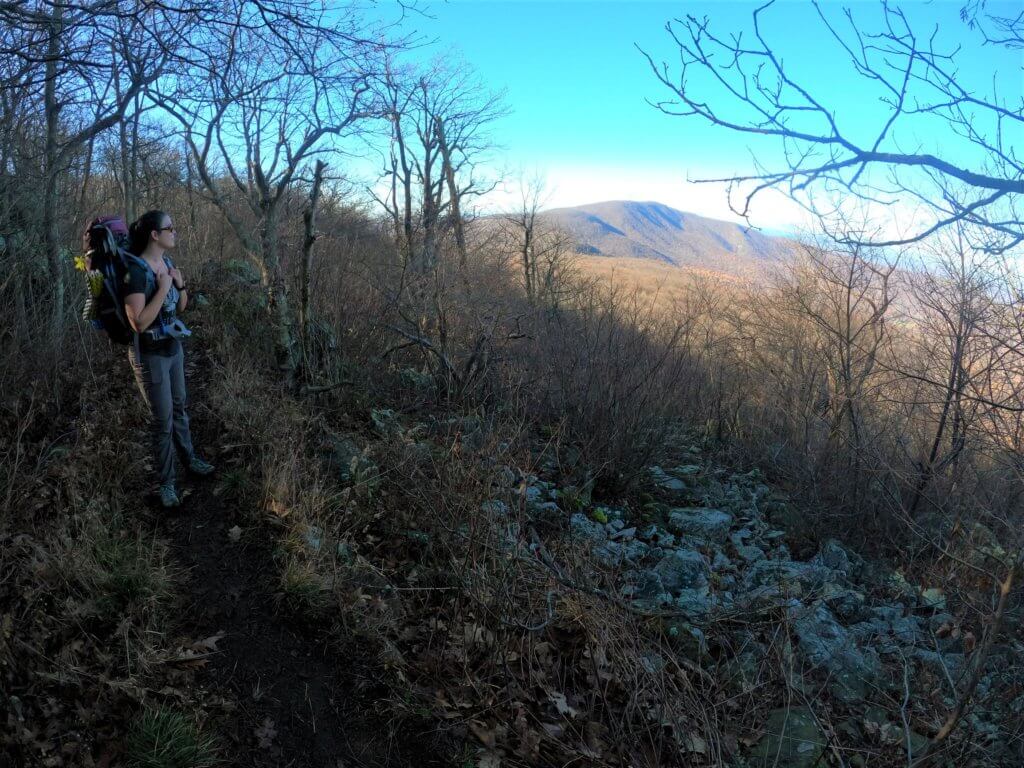
In the northern section (and likely others as well, depending on the time of year) there is a shuttle that will take you to the end of the park. This will allow you to bring one car and park it at the northernmost portion of the park. Perfect for the solo hiker.
Wildlife
For such a small sliver of park, there is an abundance of wildlife here. In the early mornings you can hear and see a multitude of woodpeckers going about their business, hammering away at the surrounding trees and red-tailed hawks soaring overhead.
Late at night, it’s the barred owls who take over with their incredibly eerie calls. Like ghosts crying out in the night.
There are plenty of other smaller critters, from snakes (yes, even a few venomous snakes to watch out for) to mesomammals, like mice. Then there are the larger mammals, like whitetail deer and black bears.
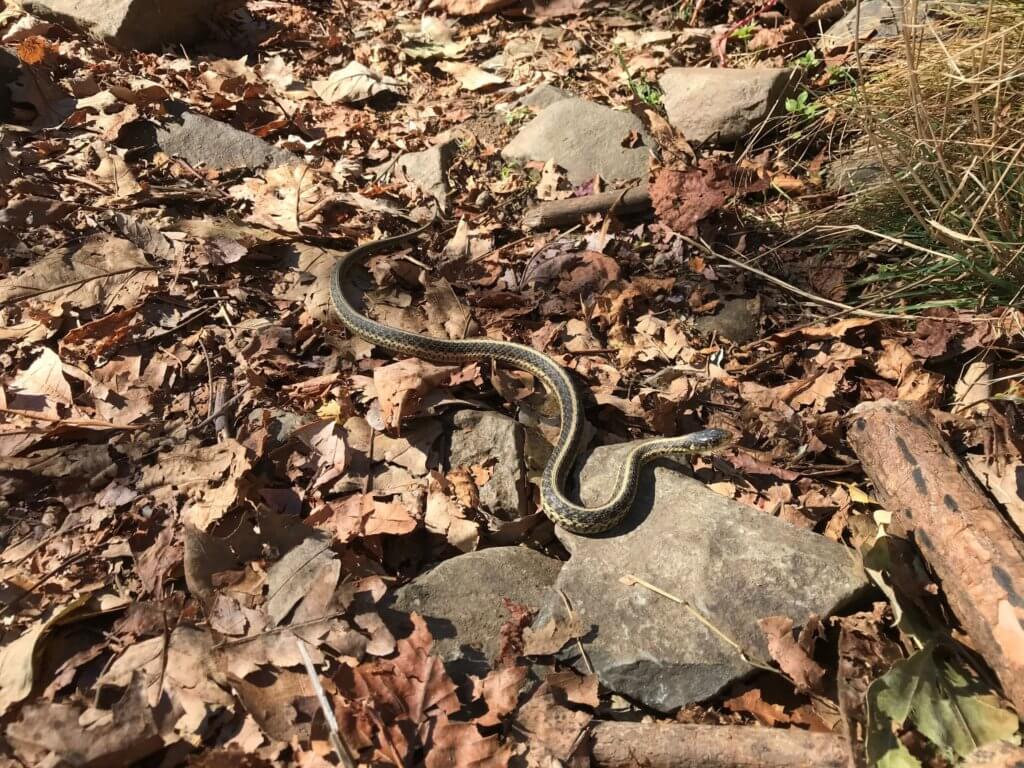
It can be a little unnerving at night when a deer rushes into the area around your camp snorting and blowing after a chase. But it can be even more unnerving when it’s a bear. And there are many bear in this park.
Though bears tend to be more afraid of us then we are of them, it is important to ensure you take precautions while in the backcountry. I recommend the use of bells to create noise. This will make sure you don’t surprise a bear with your approach. They will hear you coming from a distance and typically leave.
I carry a blowhorn as well, not just for bears but in case I were ever to get injured I could use it as a way to alert others that I am nearby.
Food storage
Shenandoah National Park does not require a bear canister, but it is recommended. There are several food storage boxes located at the huts/shelters, which I highly recommend you keep all your food and toiletries in at night.
Otherwise, you will need a dry bag to hold all your goods as well as around 100-feet of rope to hang it in a tree. In Shenandoah, a lot of the lower branches of the trees are gone, meaning you have to get that much higher in order to hang your food.
Concluding Thoughts
Shenandoah National Park is a great place to go and just enjoy nature. There are so many impressive features, from basalt rock formations to cascading waterfalls, but for me it’s more about getting out into nature.
It is not the shocking scenery of Zion or Bryce National Park but the rugged wilderness like that found along the east coast. But there is nothing like waking up in the morning and enjoying a coffee while listening to the birds as the sun warms your back.
